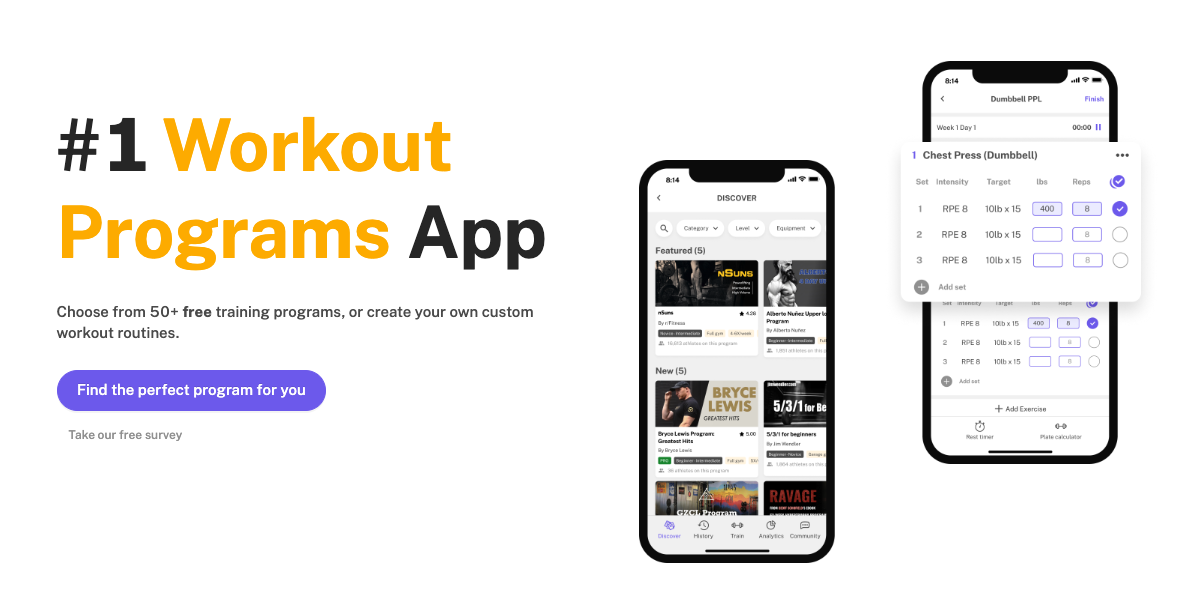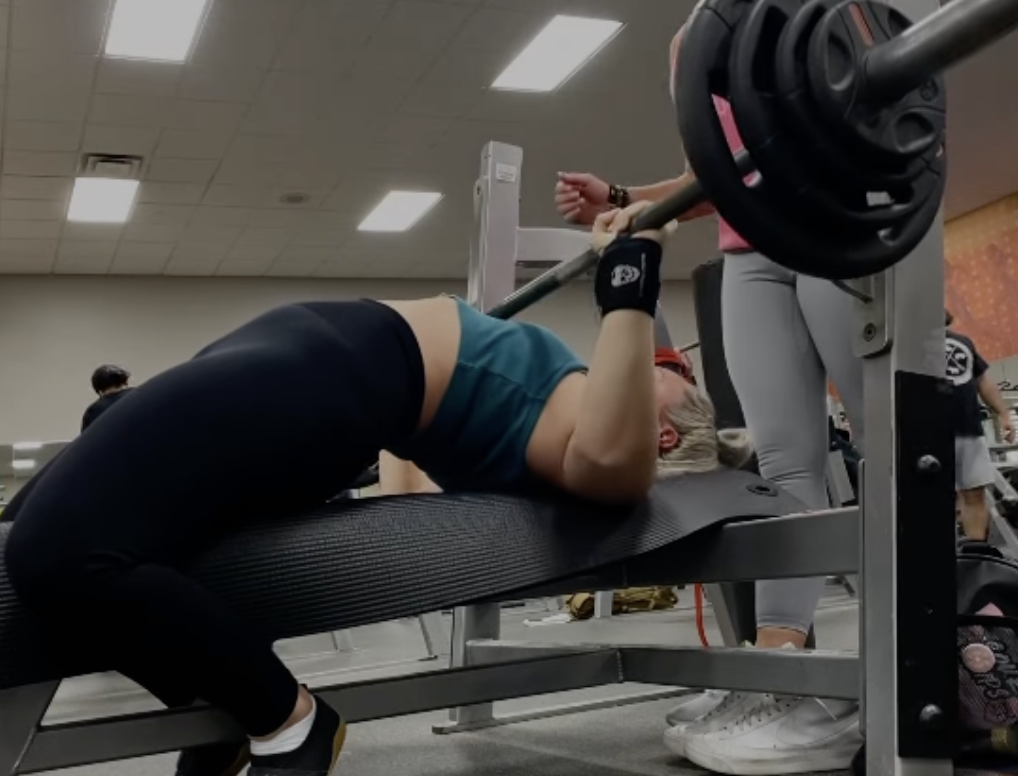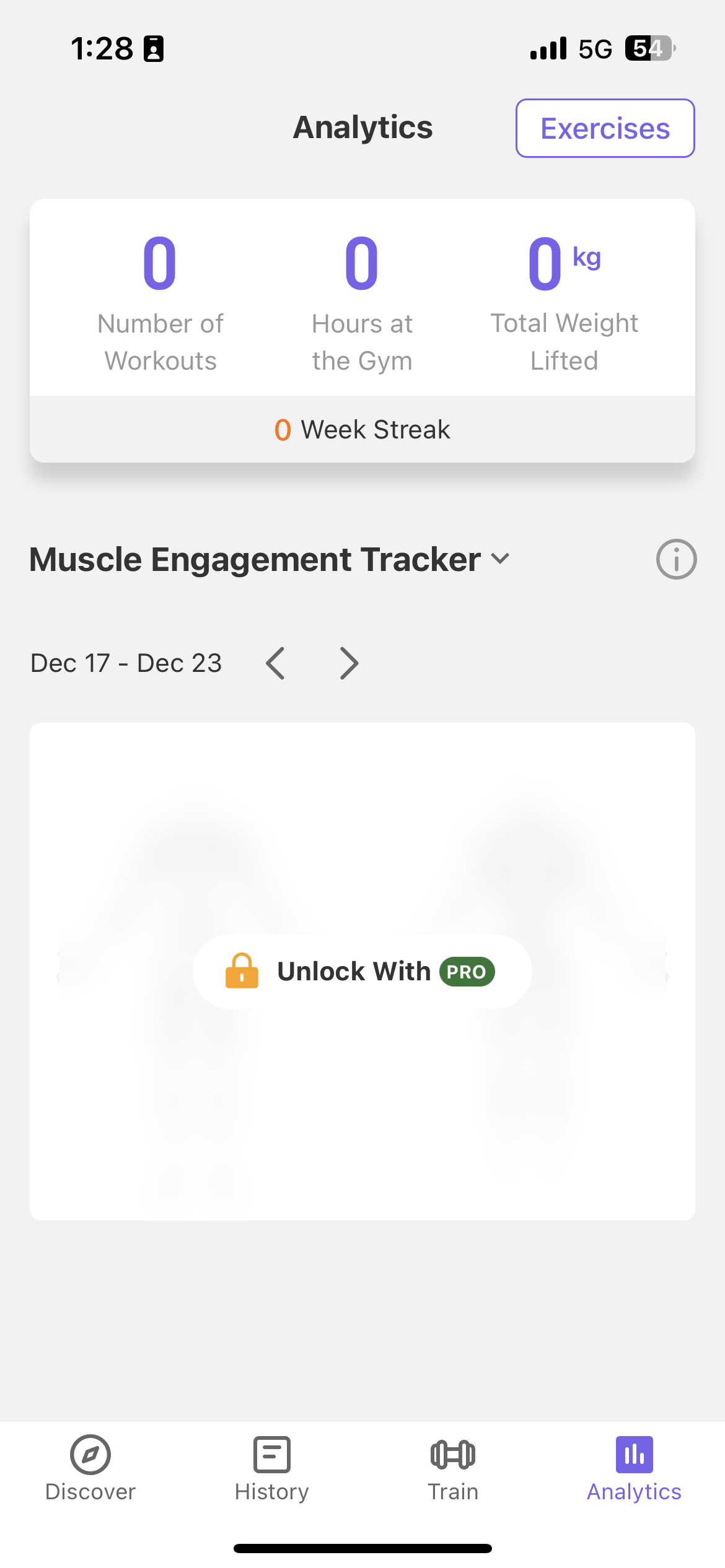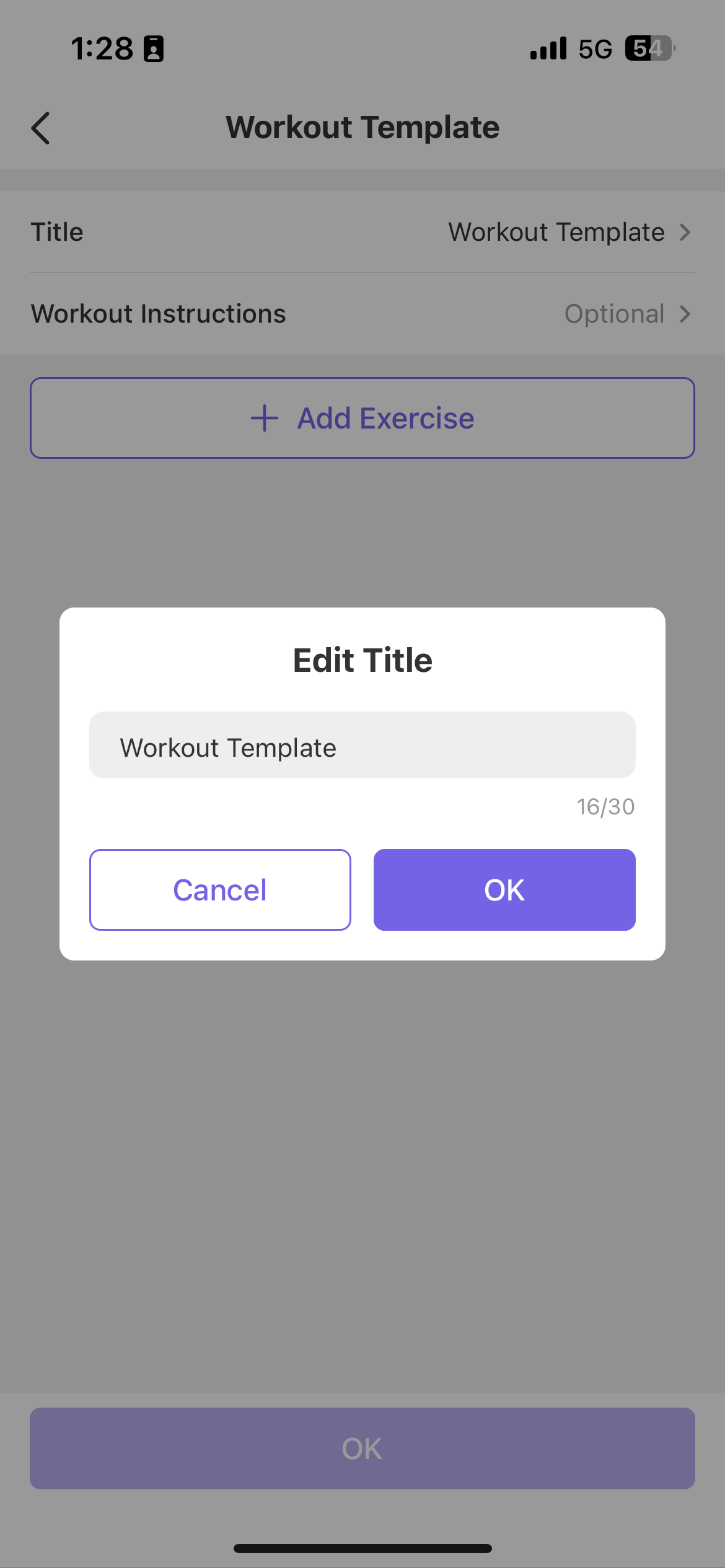The Push Pull Legs Complete Manual
Written by The Boostcamp Editors
The Ultimate PPL Guide: Complete Manual for Fitness Success
Welcome to the complete guide of the push pull legs routine, also known as the PPL split, and one of the most commonly used workout splits amongst all types of lifters, whether you are focused on bodybuilding or a strength sport like powerlifting or just being in shape. If you are looking to take your training to the next level, this workout training routine might just be what you need, as it is simple, but effective. In this guide, our team at Boostcamp will break down the basics of the push pull legs training routine, discuss who can benefit from this split, explore its benefits, and dive into the anatomy of each workout day. We'll also explore effective exercises, tips for success, and advanced strategies to help you maximize your results.
So, let's jump right in and break down the push pull legs split like never before!
Understanding the Push Pull Legs Split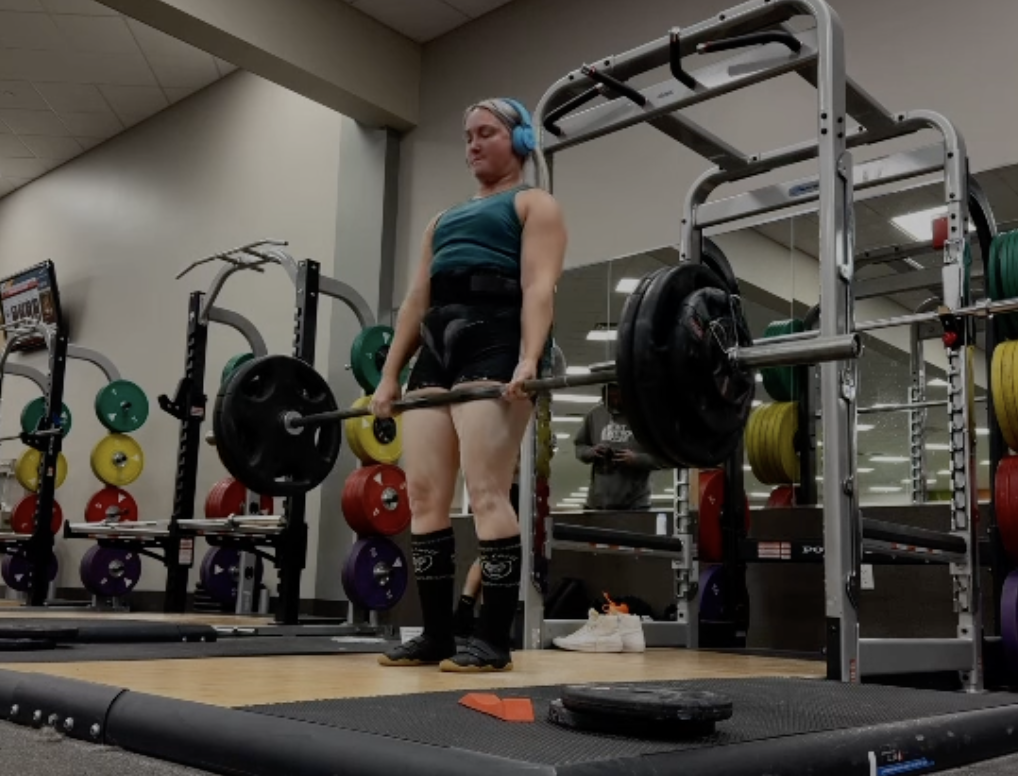
The push pull legs split is a training program that divides the body into three parts and the workouts are split up into pushing movements, pulling movements, and leg exercises, with each muscle group trained typically twice per week. This split allows for good frequency, but also enables the lifter to have effective muscle recovery and growth, flexibility in scheduling, and comprehensive workouts targeting different muscle groups.
Basics of the Push, Pull, Legs Split
The push day of the 3-day push pull legs split focuses on exercises that engage pushing muscles, such as the popular bench press and the shoulder press. These exercises target muscle groups like the chest, shoulders, and triceps, promoting both strength and size gains.
The pull day routine involves exercises for pulling muscles, such as pull-ups and rows, this day targets muscle groups like the back, biceps, forearms, and sometimes the rear delts and traps, building upper body strength and muscle mass.
The leg day of the push pull legs split includes exercises like squats, deadlifts, and calf raises. These exercises target muscles in the lower body, such as the quadriceps, hamstrings, and calves, promoting lower body strength and muscle growth.
Each workout day should include exercises that engage the specific muscle group(s), with proper form and rep range for optimal muscle development. It is important to incorporate progressive overload, where you gradually increase the weight or intensity of your workouts, to foster muscle strength and growth. Rest time between sets should be adequate for proper recovery and muscle strength. The push pull legs split allows you to train each muscle group with frequency, ensuring enough time for rest and recovery, while still stimulating muscle growth.
Who Can Benefit from the Push Pull Legs Split?
The push pull legs split is best suited for anyone, from beginners who are just starting out all the way up to intermediate lifters who have experience with compound movements, isolation exercises, and training frequency. This split is effective for individuals looking to enhance muscle size, strength gains, and overall body composition. If you have time for a little longer training sessions and are committed to a workout program, the push pull legs split can provide great results for building muscle.
The push pull legs split is also suitable for those seeking better recovery and muscle gains, as training muscle groups separately allows for effective recovery time between sessions. However, beginners should focus on proper form, training goals, and recovery time in the push pull legs split, rather than moving heavy amounts of weight. It is important to establish a good foundation of training experience, muscle strength, and proper recovery time, which the push pull legs routine can help with.
Benefits of Push Pull Legs Split
Now that we understand the basics of the push pull legs split, let's dive into the benefits it offers. As stated above, by training muscle groups separately, this split allows for enhanced muscle recovery and growth, flexibility in scheduling, and comprehensive workouts targeting upper body, lower body, and the legs.
Enhanced Muscle Recovery and Growth
One of the key benefits of the push pull legs split is enhanced muscle recovery and growth through weight training. When you are training muscle groups separately, you allow each muscle group enough time to rest and recover before entering another training session. So as long as you have a good diet and supplementation routine, and a good sleep schedule in place, you will be making gains.
Additionally, progressive overload and proper form are emphasized in this split, leading to better muscle strength, size gains, and overall muscle growth. Variation in rep range and workout routine also contributes to muscle growth, as muscles respond best to different training stimuli. The inclusion of weight training in the push pull legs split further enhances muscle development and overall fitness.
Flexibility in Scheduling
The push pull legs split is a 3-day routine, which provides flexibility in scheduling, allowing you to tailor your workout program to your individual training goals. You can adjust rest day frequency, training frequency, and workout split based on your training goals, recovery time, and training experience. Proper rest day scheduling is crucial to prevent the risk of injury, muscle fatigue, and overtraining. By incorporating rest days, you allow your muscles time to recover and grow, optimizing muscle gains and training progress. If you’re on a clockwork schedule, the synchronous split is the best option for you. This predictability means that you can actually hit your workouts every time they are supposed to be done.
Comprehensive Workouts
With the push pull legs split, you can experience an effective way to have comprehensive workouts that target the upper body, lower body, and muscle group. This split allows you to focus on specific muscle groups during each workout day, ensuring balanced muscle development and muscle strength gains. By incorporating effective compound movements to build some solid mass, isolation exercises to fine tune the muscles, and proper form to make sure you are properly hitting the target exercises and avoiding injury, you can optimize muscle growth, strength gains, and muscle fibers. This split also allows you to structure your workout routine based on your training goals and experience, yielding the best results for your body.
Downsides to Consider in a Push Pull Legs Split
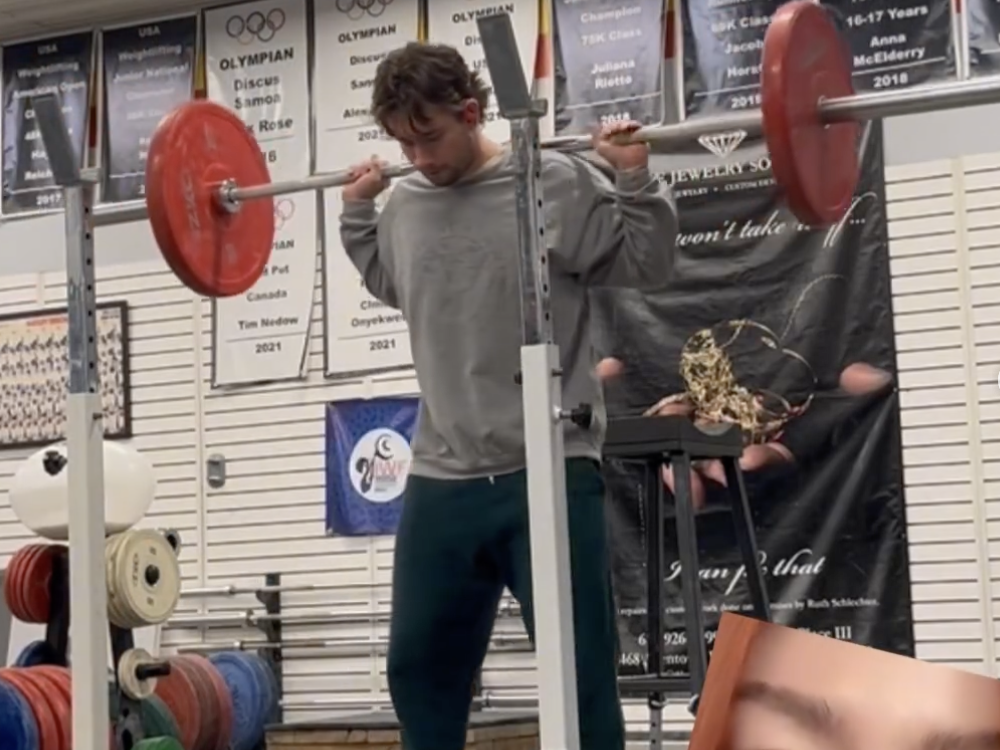
While the push pull legs split offers numerous benefits, there are some downsides to consider as well. It is important to be aware of the potential for overtraining and the fact that this split may not suit beginners.
Potential for Overtraining
One of the potential downsides of the push pull legs split is the risk of overtraining if rest time and recovery period are not sufficient, so that is something you really need to be careful of. Overtraining can lead to muscle fatigue, loss of strength gains, increased risk of injury, and overall diminished workout performance. To prevent overtraining, it is crucial to comprehend your training experience, recovery time, and muscle group training frequency. Proper rest time and recovery time are essential for muscle strength, growth, and injury prevention.
Anatomy of Push Pull Legs Routine
Now, let's delve into the anatomy of each workout day in the push pull legs split. We'll break down the push day, pull day, and leg day, exploring effective exercises, goals, and strategies for each day.
Breaking Down the Push Day
The push day of the push pull legs split focuses on exercises that engage pushing muscles, such as bench press, shoulder press, and tricep pushdowns. These exercises target muscle groups like the chest, shoulders, and triceps, promoting muscle strength and size gains in the upper body.
Effective exercises for push day include multiple compound movements, such as bench press, which engage multiple muscle groups simultaneously. Isolation exercises, like tricep pushdowns, can also be incorporated to target specific muscle groups and promote muscle growth.
Proper form, rep range, and rest time are essential for effective push day workouts. It is important to implement progressive overload, gradually increasing the weight or intensity of your exercises, to foster muscle strength gains and growth.
Exploring the Pull Day
The pull day of the push pull legs split incorporates exercises that target pulling muscles, such as deadlifts, pull-ups, and rows. These exercises target muscle groups like the back, biceps, and even the forearms, building upper body strength, muscle mass, and muscle definition.
Effective exercises for pull day include compound movements, such as deadlifts, which engage multiple muscle groups simultaneously. The deadlift is a great mass builder for the overall posterior chain, including the traps. You also can incorporate exercises like rows for back thickness, and pull-ups for width.
Similar to push day, proper form, rep range, and rest time are crucial for effective pull day workouts and growing those back muscles. By implementing progressive overload and focusing on proper muscle group engagement, you can maximize muscle strength gains, size gains, and muscle fibers.
Navigating the Leg Day
The big bad leg day of the push pull legs split targets muscle groups in the lower body, such as the quadriceps, hamstrings, and calves. Effective leg day exercises include compound movements, such as squats and hack squats, which engage multiple muscle groups, promoting lower body strength, muscle growth, and muscle definition. You also can incorporate movements like calf raises and stiff leg deadlifts for the hamstrings.
Incorporating proper form, training frequency, and rep range in leg day workouts is crucial for effective muscle growth and recovery. It is important to engage in compound exercises, such as squats and deadlifts, to optimize muscle building and lower body strength gains. Training legs in the push pull legs split contributes to better muscle building overall, as leg training generates the most testosterone and growth hormone. With a solid leg day, you will build lower body strength gains, and overall body composition. By targeting muscles in the lower body, you can experience better muscle growth, strength gains, and lower body stability.
Diving Deeper into Push Workout
Now, let's dive deeper into the push workout of the push pull legs split. We will explore effective exercises, tips for success, and strategies to make the most of your push day workouts.
Effective Exercises for Push Day
Some effective exercises for push day include:
Bench press
Shoulder press
Push-ups
Tricep pushdowns
Dips
Lateral Raises
Bench press is a compound movement that targets the chest, shoulders, and triceps, promoting upper body strength and muscle mass gains. Shoulder press is also a compound exercise. However, lateral raises and tricep pushdowns are isolation exercises that can be incorporated to target specific muscle groups, fostering muscle growth and muscle strength gains.
Tips for a Successful Push Workout
In order to have a successful push workout, it is important to incorporate a push pull legs workout program, proper form, rep range, and rest time. By utilizing compound exercises, like bench press, and isolation movements, like tricep pushdowns, you can optimize muscle growth, strength gains, and muscle fibers. Structuring your push day routine based on your training goals, experience, and rep range preferences yields the best results. Balancing muscle group exercises, isolation exercises, and rest time between push day exercises maximizes muscle recovery, muscle growth, and strength gains.
Unraveling the Pull Workout
Let's now unravel the pull workout of the push pull legs split. We will explore effective exercises, goals, and strategies for pull day workouts to enhance muscle strength, size gains, and muscle fibers.
Key Exercises for Pull Day
Pull day exercises focus on engaging pulling muscles, such as the back, biceps, and forearms, sometimes with the inclusion of the rear delts and traps. Effective exercises for pull day workouts include:
Deadlifts
Rows
Pull-ups
Bicep curls
Shrugs
Rear delt flyes
Deadlifts are compound movements that target multiple muscle groups, adding some serious mass to the back, legs, forearms, and core. Rows, pull-ups, and bicep curls are more so exercises that can be incorporated to target specific muscle groups and promote muscle growth, strength gains, and muscle fibers.
Achieving Pull Workout Goals
To achieve pull workout goals in the push pull legs split, it is important to incorporate effective exercises, proper form, rep range, and rest time. By utilizing compound movements, like deadlifts and rows, and isolation exercises, like bicep curls, you can optimize muscle growth, strength gains, and muscle fibers. Incorporating progressive overload, proper mind muscle connection to maximize muscle group engagement, and rest time between pull day exercises maximizes muscle recovery, muscle growth, and strength gains. It is important to structure your pull day routine based on your training goals, experience, and rep range preferences.
Mastering the Leg Workout
Let's now master the leg workout of the push pull legs split. We will explore essential exercises, goals, and strategies for leg day workouts, enhancing lower body strength, muscle size gains, and muscle fibers.
Essential Exercises for Leg Day
Leg day exercises target muscle groups in the lower body, such as the quadriceps, hamstrings, and calves. Some essential exercises for leg day include:
Barbell squats
Stiff leg deadlifts
Leg press
Calf raises
Lunges
Squats are compound movements that engage multiple muscle groups, including the quadriceps, hamstrings, glutes, and core. Deadlifts target similar muscles, but hit the posterior chain as a whole. Leg presses, calf raises, and lunges are isolation exercises that can be incorporated to target specific muscle groups, fostering muscle growth, strength gains, and lower body stability.
Maximizing Your Leg Workout
To maximize your leg workout in the push pull legs split, it is important to prioritize compound movements, isolation exercises, rest time, and progressive overload. By incorporating exercises like squats and deadlifts, you engage multiple muscle groups simultaneously, promoting effective muscle building and lower body strength gains. Isolation exercises, such as calf raises and lunges, target specific leg muscle groups, enhancing muscle growth, strength gains, and lower body stability. Adjusting training frequency, rest time, and rep range allows for proper muscle recovery, muscle growth, and effective leg day training.
Advanced Strategies in Push Pull Legs Split
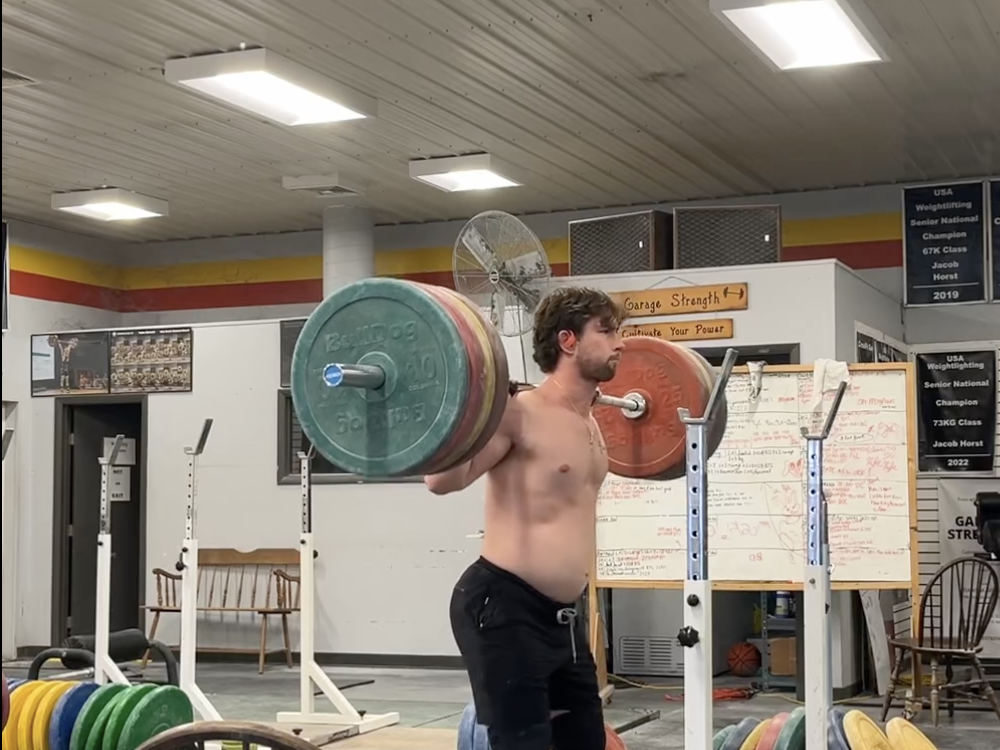
Now, let's explore advanced strategies in the push pull legs split. We will discuss designing an intermediate push pull legs routine, moving to an advanced push pull legs routine, and the importance of rest and recovery in maximizing results.
Designing an Intermediate Push Pull Legs Routine
As you progress in your training, you can design an intermediate push pull legs routine to further enhance muscle growth, strength gains, and muscle fibers. This routine may involve increasing training frequency, incorporating compound movements, and adjusting rest time. By utilizing compound exercises, isolation movements, and proper form, you can customize your push pull legs routine for optimal results. It is important to consider your training goals, experience, recovery time, and muscle group development when designing an intermediate routine. Regardless if you are experienced or just starting your road to fitness, we are going to give you the know-how to build and plan your best 3-day or 6-day workout split for adding muscle and building strength.
Moving to an Advanced Push Pull Legs Routine
Once you have mastered the intermediate push pull legs routine, you can move on to an advanced routine for even greater muscle gains, strength gains, and muscle fibers. This routine may involve increasing training frequency, incorporating more compound movements, and challenging yourself with heavier weights or higher rep ranges. Adjusting your training split, recovery time, and workout program based on your training goals, experience, and muscle group development is essential for effective results. Seek professional guidance if needed to assess your training readiness and potential training alternatives. Sooner or later, you’ll have completed the PPL program of your choice.
Importance of Rest and Recovery in a Push Pull Legs Split
Rest and recovery play a crucial role in the push pull legs split. Proper rest time between workouts, rest day frequency, and effective recovery techniques contribute to muscle growth, strength gains, and injury prevention.
Balancing Workouts with Adequate Rest
In order to prevent overtraining, it is important to manage training load, rest day frequency, and recovery time. Balancing workouts with adequate rest allows muscles time to recover, repair, and grow, optimizing muscle gains, strength gains, and training progress. You also can also put an emphasis on different muscles each day. For example, on the first push day you can focus more on the chest, then on the second you can focus more on the shoulders. For the two pull days, you can focus more on thickness (rows) then the next on width (pull-downs). For legs, you can dedicate one leg day to hamstrings and another to quads.
Consider rest day frequency based on your training goals, recovery time, and muscle group training frequency. Prioritize recovery time to prevent muscle fatigue, burnout, and risk of injury. By allowing ample rest between training sessions, you set yourself up for better muscle recovery, muscle growth, and strength gains.
Techniques for Faster Recovery
To enhance muscle recovery time, consider implementing techniques for faster recovery. Active recovery methods, such as light exercises, stretching, cardio, and mobility exercises, can improve muscle recovery time and reduce muscle soreness. Optimizing nutrition and hydration also contribute to faster muscle recovery. Maintaining proper sleep habits, practicing good sleep hygiene, and getting enough restful sleep support effective muscle recovery. Additionally, incorporating massage, foam rolling, and other recovery techniques can help alleviate muscle soreness, promote proper muscle recovery, and enhance training performance.
Preparations for a Successful Push Pull Legs Split
Before starting a push pull legs split, it is important to set realistic goals, create a balanced workout plan, and prepare yourself mentally and physically for the training program.
Setting Realistic Goals
Setting realistic goals is crucial in any training program, including push pull legs split. For example, you shouldn’t look to be the next Arnold Schwarzenegger, Mr. Olympia with one run through of the PPL split. Instead, establish achievable short-term and long-term goals that align with your capabilities, time, effort, and commitment. Acknowledge your personal strengths and areas of improvement when setting goals. Consider your personal preferences, lifestyle, and fitness aspirations to set goals that are specific, measurable, attainable, relevant, and time-bound (SMART).
Creating a Balanced Workout Plan
Creating a balanced workout plan is essential for effective muscle growth, strength gains, and muscle fibers. Incorporate push, pull, leg exercises, strength training, cardiovascular exercises, and flexibility training into your routine. Rotate muscle group emphasis to prevent overtraining, enhance recovery, and optimize muscle growth. Plan workouts that target major muscle groups, ensuring comprehensive training and muscle strength development. Consider rest days, recovery sessions, and active recovery sessions in your workout plan. This allows for proper muscle recovery, muscle growth, and training progress, while preventing muscle fatigue, injury, and burnout.
Transitioning from the Push Pull Legs Split
As you progress in your training, you may reach a point where you need to transition from the push pull legs split to continue challenging yourself and achieving new goals. It is important to be aware of the signs that indicate you're ready to move on and explore alternatives to the push pull legs split.
Signs You're Ready to Move On
There are several signs that indicate you're ready to move on from the push pull legs split. If you experience stagnation in strength gains or muscle growth despite consistent training, it may be time to explore new training methodologies and workout routines. Developing an interest in trying different training splits, rep ranges, or workout program variations can also be a sign of readiness to move on. If you encounter signs of overtraining, lack of motivation, or diminishing workout enjoyment, it may be time to consider new training approaches. Seeking professional guidance can help assess your training readiness and potential training alternatives that best align with your goals, experience, and muscle group development.
Alternatives to the Push Pull Legs Split
If you're ready to explore alternative training methods, there are several options to consider. Upper/lower splits, full body workouts, bro splits, push/pull splits, or body part training splits can provide diversified workout routines and training stimuli. Experimenting with different training splits, rep ranges, training frequency, and workout program variations can help you find the best training split for your goals, experience, and muscle group development. Embrace training diversity while evaluating the best training split for your personal growth, muscle strength, and muscle gains.
That being said, check out the Boostcamp App for over 50 FREE programs or even create your own. Boostcamp also allows you to track progress, so you know how to adjust each week. Be sure to also follow Boostcamp on Instagram and subscribe on YouTube!
Making the Most of Your Push Pull Legs Split
To make the most of your push pull legs split, it is important to incorporate effective training practices, set goals, and customize your workout program for optimal results.
How Can One Customize a Push Pull Legs Split for Optimal Results?
To customize a push pull legs split for optimal results, tailor push, pull, leg workouts, and exercise selection to your individual muscle group development. Consider rep range, rest time, training frequency, and workout split based on your training goals, experience, recovery time, and muscle gains. Modify your workout program, training experience, rest time, and recovery time to achieve personalized results. Prioritize muscle group balance, isolation exercises, and rest time between sets to promote better recovery, muscle growth, and strength gains.
Where to Find a Good Push Pull Legs Split
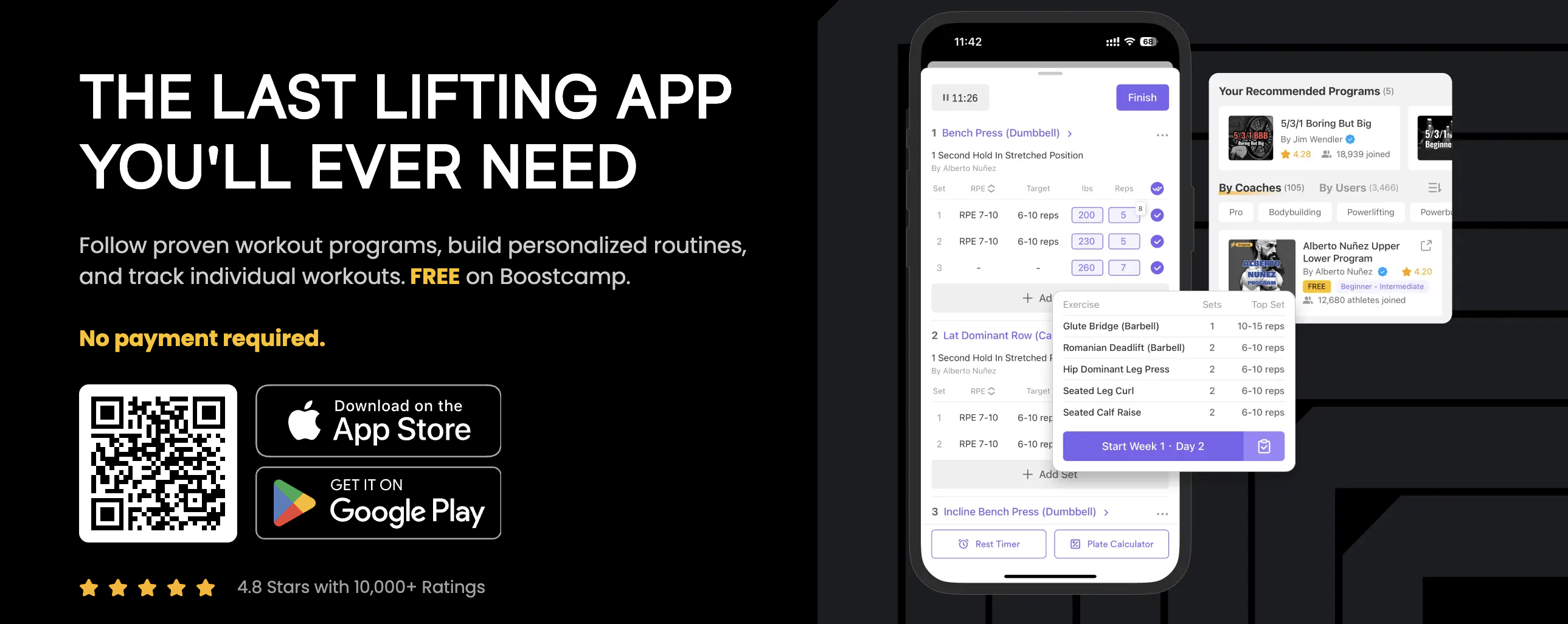 When it comes to finding the best push, pull, legs split, Boostcamp can be your last stop. When you are looking for a push pull legs program that will really push you to the limit, take a look right on the Boostcamp App. There are plenty of push pull legs programs to be found, amongst other free programs, over fifty to be exact, all written by amazing coaches.
When it comes to finding the best push, pull, legs split, Boostcamp can be your last stop. When you are looking for a push pull legs program that will really push you to the limit, take a look right on the Boostcamp App. There are plenty of push pull legs programs to be found, amongst other free programs, over fifty to be exact, all written by amazing coaches.
When it comes to finding and following a new workout program and seeing how you are progressing with it, you would want to find a platform that caters to your needs and guides you in the right direction. Boostcamp can do that, and it can even help you to measure your progress, track your workouts, and continue with linear progression.
Tracking Workouts With Boostcamp
Properly monitoring workout progress is vital for achieving fitness milestones, such as an increase in weight on your big compound lifts, or even those accessory movements. It promotes a positive attitude toward exercise and enables adjustments for progression. Tracking allows for metrics monitoring, ensuring endurance and wellness are on track. That being said, when you are switching to and/or from a push pull legs split, you really should attempt to track your progress to see how you are doing with things.
That being said, Boostcamp is a great app to track workouts and make sure that you are on the right path.
Customizing Your Workouts With Boostcamp
Another thing that makes Boostcamp the last lifting app you’ll ever need, is the ability to create and customize your own workout programs. While there are plenty of push pull legs splits to choose from on the app, you may not always like the pre-written programs. That being said, you can create your own with Boostcamp's Program Creator, and easily adjust it!
Sample Template
Push Day:
Compound Exercises:
Barbell Bench Press
Overhead Press
Dumbbell Flyes
Isolation Exercises:
Tricep Dips or Tricep Pushdowns
Lateral Raises
Tricep Skull Crushers
Pull Day:
Compound Exercises:
Deadlifts (or Romanian Deadlifts)
Pull-Ups or Lat Pulldowns
Barbell or Dumbbell Rows
Isolation Exercises:
Face Pulls
Bicep Curls (Barbell or Dumbbell)
Hammer Curls
Leg Day:
Compound Exercises:
Squats (Back Squats or Front Squats)
Deadlifts (if not done on pull day)
Lunges (Walking Lunges or Stationary Lunges)
Isolation Exercises:
Leg Extension
Leg Curls (Hamstring Curls)
Calf Raises
Sample Weekly PPL Schedule:
Day 1: Push
Day 2: Pull
Day 3: Legs
Day 4: Rest or Active Recovery
Day 5: Push
Day 6: Pull
Day 7: Legs
Day 8: Rest
Push Pull Legs FAQs
With all that being said, you may have a few questions. So let’s take a look.
Is push pull legs good for bodybuilding?
Yes! A push pull legs split is good for bodybuilding, as it allows for good training frequency and recovery in between training sessions.
Can I get away with three days a week?
While three days a week is not the most optimal, it allows you to hit each of the three muscle sections that the body is divided up into each week.
Conclusion
To sum up, the Push Pull Legs (PPL) split is a versatile and effective workout routine that can benefit various individuals. It offers enhanced muscle recovery and growth, flexibility in scheduling, and comprehensive workouts. However, it is important to consider potential downsides such as the potential for overtraining and its suitability for beginners.
To make the most of your PPL split, ensure you design a balanced workout plan, set realistic goals, and prioritize rest and recovery. As you progress, you may need to transition to more advanced routines or explore alternatives. Customizing your PPL split to fit your specific needs and goals will help you achieve optimal results. Remember, consistency, proper form, and listening to your body are key to success in any workout routine. So, go ahead, try the PPL split, and witness the positive impact it can have on your fitness journey. Happy lifting!
Also, be sure to follow Boostcamp on Instagram and subscribe on YouTube!
